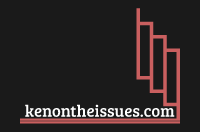In the fast-paced, digitally connected world we live in today, personal blogs have become an essential platform for individuals to share their thoughts, expertise, and experiences with a global audience. Whether you’re passionate about travel, cooking, fashion, or self-improvement, a personal blog allows you to create a unique space where your voice can be heard. Blogging not only helps individuals express themselves but also opens up opportunities for professional growth, networking, and even monetization. This article will guide you through the essential steps needed to start a successful personal blog, from choosing a niche to creating engaging content and building a loyal audience.
Defining Your Purpose and Choosing a Niche
The first step in creating a successful blog is to define your purpose. Ask yourself, “Why do I want to start a blog?” Your goals could range from sharing personal experiences, building an online portfolio, or even monetizing your blog over time. Defining a clear purpose will give your blog direction and help you stay consistent in your efforts. Knowing why you are blogging also helps shape the type of content you’ll produce and the tone you’ll use. Without a clear purpose, you may find it challenging to maintain focus and attract a dedicated audience.
Once you’ve established your goals, it’s time to choose a niche. A niche is a specific topic or theme that your blog will focus on. Selecting a niche can be tricky, but it’s important to choose something that aligns with your interests and expertise. Ideally, your niche should be a blend of your personal passions and what appeals to a larger audience. The key to success in blogging is finding a balance between writing about what you love and topics that resonate with your readers. Whether it’s health, lifestyle, or tech, a well-defined niche will set you apart from the competition.
After identifying your niche, the next step is to analyze your target audience. Understanding who your readers are is crucial for creating relevant content that speaks directly to them. Consider the demographics of your potential readers: their age, location, interests, and the challenges they face. This will guide the tone, style, and topics of your blog posts. The more you know about your audience, the better you can tailor your content to meet their needs and expectations. A well-targeted blog is more likely to attract and retain a loyal readership.
Lastly, it’s essential to research other blogs within your chosen niche. This will give you insights into what works well and what you can do differently to stand out. Analyze their content, design, and audience engagement strategies to identify gaps you can fill or unique perspectives you can bring to the table. By understanding the competition and what your audience wants, you’ll be better equipped to create a blog that resonates with readers from the start.
Choosing a Platform and Setting Up Your Blog
When it comes to choosing a platform for your personal blog, you have several options, each with its own set of features and benefits. The most popular platform for bloggers is WordPress, known for its flexibility and extensive customization options. With WordPress, you can build everything from a simple blog to a complex website with various functionalities. Blogger is another user-friendly option, particularly for beginners who want a straightforward blogging experience without needing to worry about hosting. Medium is perfect for writers focused solely on content without the hassle of design and technical setup, though it offers less control over customization.
Once you’ve chosen a platform, it’s time to register a domain name and choose a hosting service. A domain name is your blog’s address on the internet, so it’s important to choose something that reflects your brand and is easy to remember. Ideally, your domain should be short, catchy, and relevant to your niche. Hosting, on the other hand, is where your blog’s files are stored and made accessible to visitors.
The next crucial step is customizing your blog’s design and user interface. The design of your blog should not only be visually appealing but also user-friendly. Your blog’s layout should be easy to navigate, with clear categories and a search bar to help readers find content quickly. The design also plays a role in branding, so choose colors, fonts, and images that reflect your niche and the tone of your content. A well-designed blog is more likely to keep visitors engaged and encourage them to explore multiple posts.
Finally, ensure that your blog is mobile-responsive. With the majority of internet users accessing websites via smartphones, it’s essential that your blog looks good and functions well on all devices. Most blogging platforms offer mobile-friendly themes, but it’s still a good idea to test your blog on different devices to ensure a seamless user experience. A responsive design will improve the overall user experience, making it easier for readers to consume your content no matter how they access your blog.
Creating High-Quality Content
At the heart of every successful blog is high-quality content. Before you start writing, it’s important to plan a content strategy. This means deciding on the types of content you’ll produce and how often you’ll post. Consistency is key in blogging, so setting up an editorial calendar can help you stay organized and ensure that you publish content regularly. Consider creating a mix of content types, such as how-to guides, personal stories, listicles, and interviews. Diversifying your content keeps your blog fresh and engaging for your readers.
- When it comes to writing blog posts, focus on creating content that is both informative and engaging. Your writing should reflect your unique voice, making it relatable to your audience. Whether you are educating your readers on a specific topic or sharing a personal experience, ensure that your posts provide value. Structure your posts with clear headings and subheadings to make them easy to read. Additionally, keep your paragraphs short and to the point, as long blocks of text can be off-putting to readers.
- Incorporating multimedia elements such as images, videos, and infographics can take your content to the next level. Visuals not only break up text but also help illustrate your points and make your posts more engaging. For example, if you’re running a travel blog, high-quality images of your destinations can enhance the reader’s experience. If you’re explaining a complex topic, an infographic can simplify the information and make it easier to understand. Videos are another great way to engage readers, offering a dynamic and interactive element to your blog.
- Finally, always proofread your content before publishing it. Spelling and grammar mistakes can make your blog look unprofessional, so take the time to edit your posts thoroughly. Tools like Grammarly or Hemingway Editor can help you catch errors and improve readability. Remember, quality content builds trust with your audience, and well-written, error-free posts are key to establishing credibility in your niche.
Promoting Your Blog and Building an Audience
Once you’ve created high-quality content, the next step is to promote your blog and attract readers. One of the most effective ways to drive traffic to your blog is through SEO optimization. SEO (Search Engine Optimization) involves optimizing your blog posts to rank higher in search engine results. This includes using relevant keywords, optimizing images with alt tags, and creating meta descriptions that accurately describe your content. The better optimized your blog is for search engines, the more likely it is that potential readers will discover your content.
Social media is another powerful tool for promoting your blog. Platforms like Instagram, Twitter, and Facebook allow you to share your content with a broader audience and drive traffic back to your blog. Create social media accounts specifically for your blog and consistently share your posts, engage with your followers, and join conversations within your niche. Social media is not just about promoting your blog—it’s also about building relationships and interacting with your audience in real-time.
Building a community around your blog is essential for long-term success. Encourage readers to leave comments, ask questions, and share their thoughts on your posts. Responding to comments and engaging with your readers makes them feel valued and creates a sense of connection. You can also build a mailing list and send out newsletters to keep your audience updated on new content and exclusive offers. Email marketing is a powerful way to nurture your relationship with your readers and keep them coming back to your blog.
Lastly, consider collaborating with other bloggers in your niche. Guest posting on other blogs or hosting guest writers on your platform can help you reach new audiences. Networking with fellow bloggers also provides opportunities for mutual support, knowledge-sharing, and growth. Building a successful blog takes time, but with persistence, high-quality content, and a strategic approach to promotion, your personal blog can thrive and become a rewarding venture.
In addition, we would like to recommend you our other article, where we talked about blockchain payment gateway.
FAQ
A niche in blogging refers to a specific topic or theme that your blog focuses on. It should blend your personal interests with topics that appeal to a larger audience, setting your blog apart and attracting dedicated readers.
Understanding your audience helps you create relevant content that resonates with them. By knowing their demographics, interests, and challenges, you can tailor your blog posts in terms of tone, style, and topics, increasing engagement and building a loyal readership.
Researching other blogs in your niche provides insights into successful strategies and audience preferences. It helps you identify gaps in content or unique perspectives you can offer, allowing you to differentiate your blog and attract readers from the outset.

